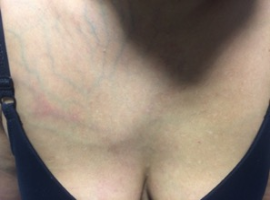Ines B. Ferreira*, Ana O. Monteiro and Jorge Almeida
Internal Medicine Department, Centro Hospitalar Universitario Sao Joao, Porto, Portugal
*Corresponding author: Ines Branco Ferreira, Internal Medicine Department, Centro Hospitalar Universitario Sao Joao, Alameda Prof. Hernani Monteiro, 4200-319 Porto, Portugal, Tel: +351918335210; E-mail: inessalomebf@gmail.com
Received: August 17, 2020; Accepted: August 24, 2020; Published: September 15, 2020
Citation: Ines B. Ferreira, Ana O. Monteiro, Jorge Almeida, et al. Mondor’s Disease: A Rare Diagnosis. Clin Image Case Rep J. 2020; 2(4): 122.


